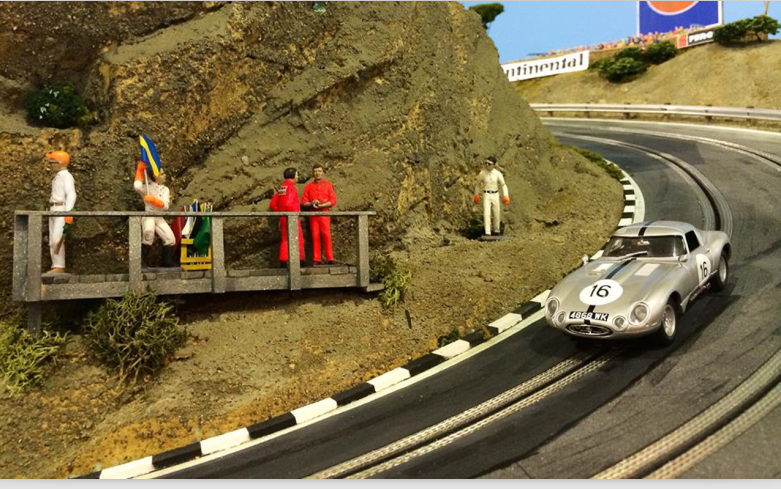
Slot Car History
A slot car (sometimes, slotcar) is a powered miniature auto or other vehicle that is guided by a groove or slot in the track on which it runs. A pin or blade extends from the bottom of the car into the slot. Though some slot cars are used to model highway traffic on scenic layouts, the great majority are used in the competitive hobby of slot car racing or slot racing.

The first commercial slot cars were made by Lionel (USA) and appeared in their catalogues from 1912, drawing power from a toy train rail sunk in a trough or wide slot between the rails. They were surprisingly similar to modern slot cars, but independent speed control was available only as an optional extra. Production was discontinued after 1915. Sporadically over the next forty years, several other electrically powered commercial products came and went. Although a patent was registered as far back as March 1936 for a slot car, until the late 1950s, nearly all powered toy vehicles were guided by raised rails, either at the wheels (railroad-style), or at the lane center, or edge.

In 2004, a number of traditional slot car manufacturers introduced digital control systems, which enable multiple cars to run in the same lane and to change lanes at certain points on the course. Digitally coded signals sent along the power strips allow each car to respond only to its own controller.In addition, imaginative manufacturers have used the slot track system to allow the racing of a variety of unusual things, including motorcycles, boats, airplanes, spacecraft, horses, fictional and cartoon vehicles, snowmobiles, and futuristic railroad trains.






